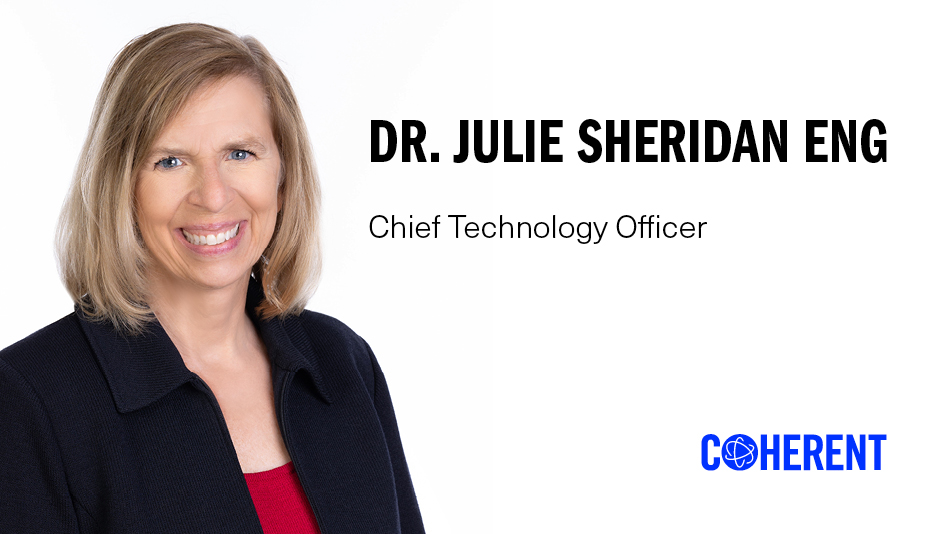DATACOM INNOVATION IN THE AI ERA
How Coherent is powering innovation in artificial intelligence and machine learning for next-generation datacenters.
Chief Technology Officer
June 23, 2023 by Coherent
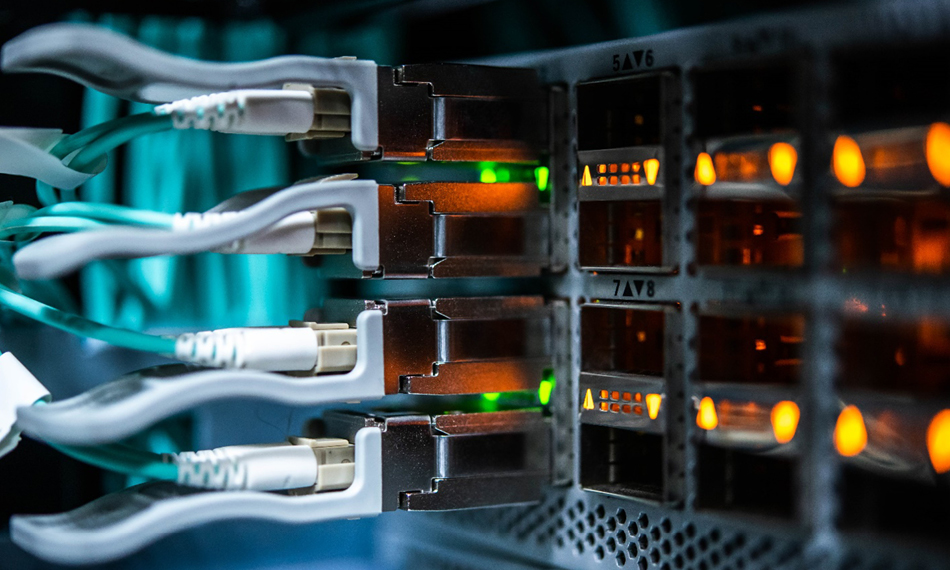
In the world of transceivers, change is the only constant — and we are in the early days of a step- change thanks to advances in artificial intelligence.
I’ve just reached my 20-year anniversary with Finisar/II-VI/Coherent. As many of you know, Finisar (now Coherent) was a pioneer in pluggable transceivers so much so that the name Finisar became almost synonymous with transceivers.
From telecom networks to enterprise datacenters to web 2.0 hyperscalers, much has changed over the past two decades because of evolutionary and revolutionary changes in the key market drivers.
Today, we’re seeing another major market transition, namely the dramatic growth in artificial intelligence (AI) and machine learning (ML). These applications will define the next chapter in the optical transceiver story – a chapter we are already writing here at Coherent.
It's an important story because transceivers are a critical if invisible part of the modern world we live in. Whether we realize it or not, most of us use the fiber optic network and transceivers on a daily basis.
One simple example is using a search engine. Did you ever think about what happens between when you type a search query and when you get the results back? The average search query travels hundreds of miles to a datacenter and back over the fiber optic network. Inside the data center, a single search query uses hundreds of computers to retrieve an answer. These computers are networked together using optical fiber. Optical transceivers perform the vital function of converting the electrical signals into optical signals and back again. So, if you ran a search today, you used the fiber optic network and, very likely, the signals ran over Coherent transceivers.
Why AI innovation demands networking innovation
Let’s start with a bit of market perspective.
I’m sure most of us have read about or used ChatGPT from OpenAI, Bard from Google, or Bing from Microsoft. In fact, OpenAI’s ChatGPT has been called the fastest-growing app in history, reaching 100 million users in only two months.
But what does this have to do with transceivers, you may ask?
The AI must be trained on an existing dataset, which can contain billions of parameters. This requires significant compute power, which is distributed over tens of thousands of processors. To address these new requirements, datacenters are fundamentally rearchitecting and adding server and networking equipment specifically dedicated to AI and ML.
The front end of the network (Level 1) remains the traditional architecture of spine switches connected to leaf/top-of-rack (ToR) switches. A new accelerated compute portion of the network (Level 0 or back-end), which consists of AI/ML servers and accelerated compute devices, bolts onto the traditional network alongside traditional compute and storage. Optical interconnects including transceivers are used at all levels in this network.
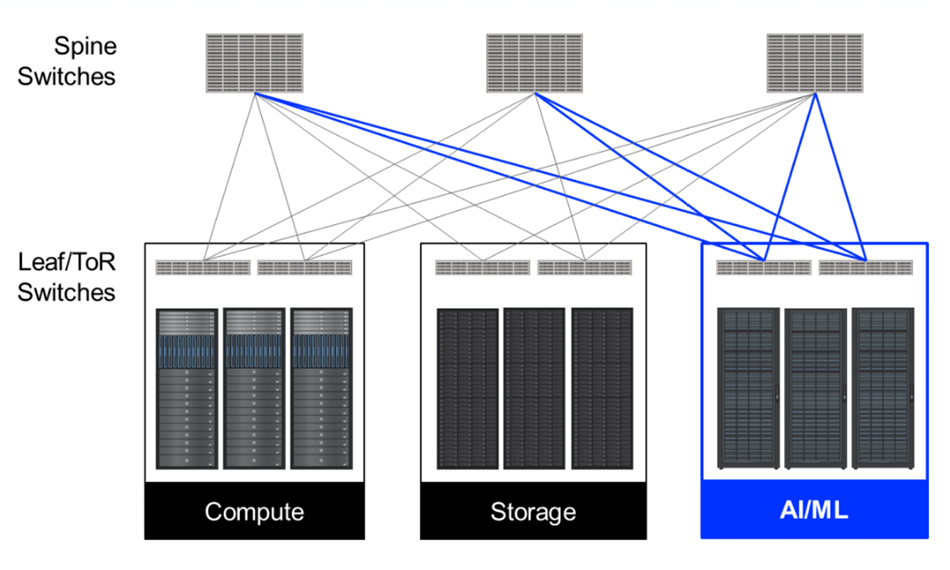
AI/ML servers and their connectivity fabric, alongside connectivity for traditional compute and storage servers, increase the number of optical links in data centers.
The speed of transceivers is critical to the performance of the network. Network changes to address AI and ML are driving us and others in the industry to introduce higher-speed transceivers at a faster pace than ever before. Only 20 years ago, the highest data rate for optical transceivers was 10G. Today, more than 50% of Coherent’s datacom revenue is generated by 200G and higher data-rate transceivers. Driven by the demands of growing AI/ML adoption, 800G transceivers are shipping in production and we expect the first 1.6T transceivers will ship in the next few years. In five years, the market opportunity for 800G and 1.6T datacom transceivers is expected to be greater than all other types of datacom transceivers combined, largely driven by AI and ML.
At Coherent, we already have a complete portfolio of transceivers matched to the requirements set by AI and ML. These transceivers are protocol-agnostic, meaning the same transceiver hardware can support Ethernet and InfiniBand, as well as proprietary protocols for AI and ML such as NVIDIA’s NVLink. Coherent is widely recognized as an expert in these transceivers and their core technologies.
Vertical Integration → Fast Innovation→ Faster Transceivers
Increasing the speed of transceivers to meet this need has required an extremely fast pace of innovation. How do we do it?
Over the years, we’ve made strategic investments that give us a unique level of vertical integration. We not only design and manufacture our transceivers internally, we also design and manufacture many of the components including lasers, detectors, and passive optics. When designing a new transceiver that requires a new component, we either source that component from one of our valued development partners, or we design and manufacture it internally. We decide what to develop internally and what to develop with suppliers based on business case, time to market, and strategic considerations.
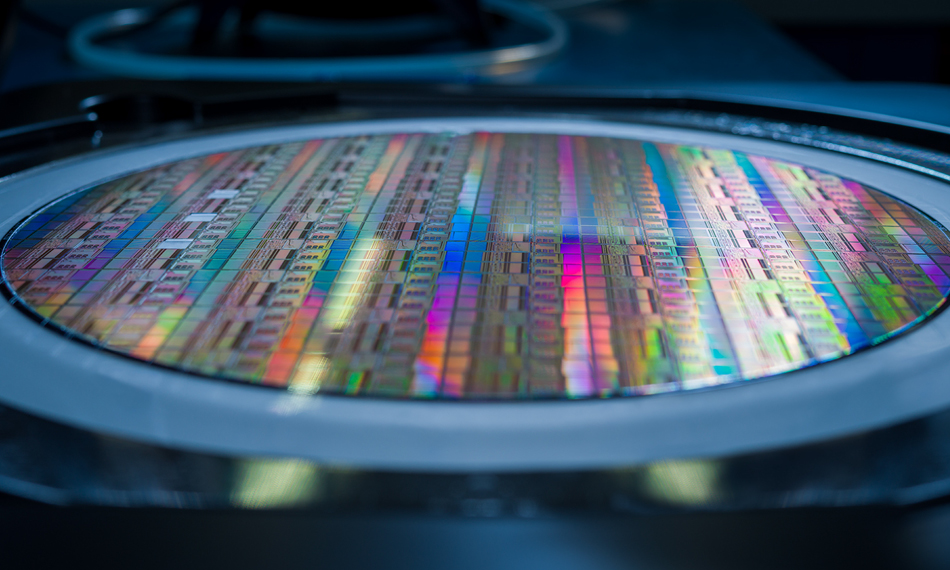
Coherent develops many components for transceivers internally. Above: integrated circuits developed by Coherent.
Connecting the world with cutting-edge datacom technologies
As the CTO and the former leader of our datacom transceiver engineering for 15 years, please indulge me while I explain some of the details of how we use our vertical integration — and specifically a range of cutting-edge laser technologies — to create the 800G and 1.6T transceivers the market increasingly demands.
800G and 1.6T transceivers require 100G/lane and 200G/lane lasers. The type of laser used is determined by the data rate and the fiber link length. Generally speaking, interconnects in the AI/ML fabric portion of the network (Level 0) are less than 50 m, interconnects connecting ToR switches to spine switches (Level 1) are up to 500 m, and interconnects connecting switches to routers or routers to routers (Telecom Access) are between 2 and 10 km. Each of these distances and applications are best served by different laser technologies.
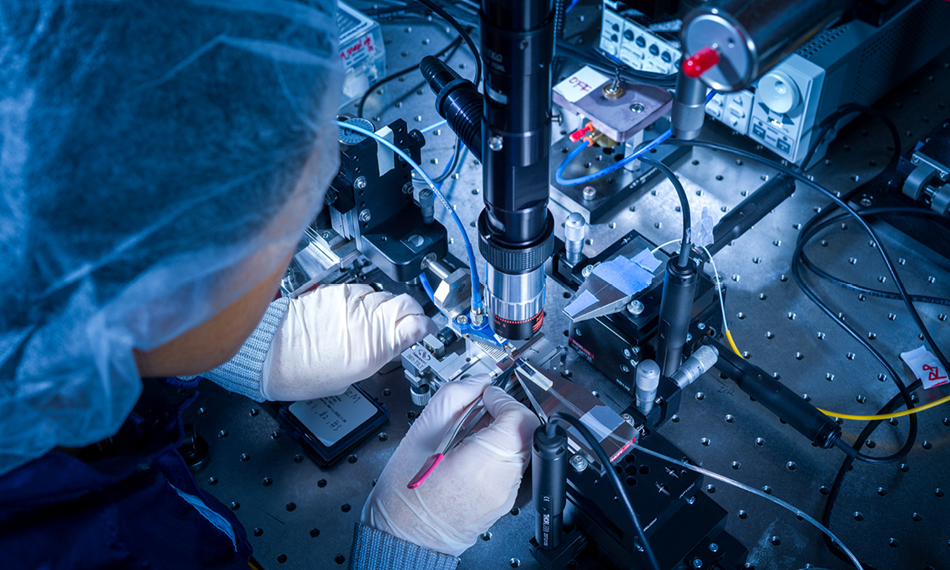
Coherent transceiver R&D lab in Fremont, CA.
For link distances less than 100 m, including Level 0 interconnects and a subset of Level 1 interconnects, Vertical Cavity Surface Emitting Lasers (VCSELs) are used. These are based on our gallium arsenide (GaAs) technology platform. VCSELs are generally the lowest-cost, lowest-power consumption solution, and are the lasers of choice for less than 100 m connections. We’re seeing significant demand for VCSEL-based transceivers for AI/ML applications.
Coherent has multiple 6” GaAs VCSEL fabs in the U.S. and Europe. We are one of the highest-volume manufacturers of VCSELs in the world, shipping VCSELs into both datacom and consumer applications. Our 100G/lane VCSELs are in production to support 400G and 800G transceivers. We are working on 200G/lane VCSELs, which will require significant changes in the VCSEL device design and fabrication.
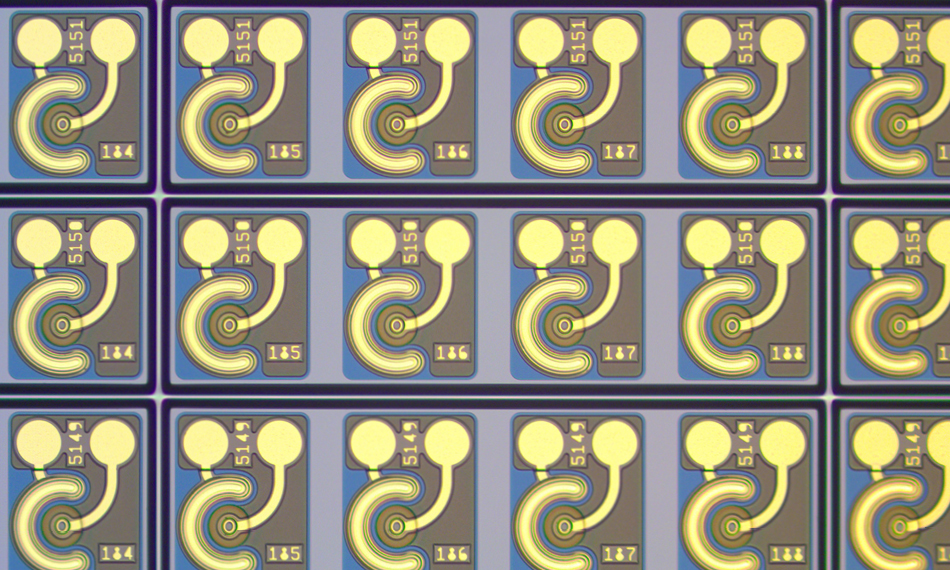
High-speed VCSELs manufactured on 6” gallium arsenide wafers.
For Level 1 switching for distances greater than can be supported by VCSELs, and for telecom access, single-mode devices are used. These devices are made from indium phosphide (InP) materials. Coherent has multiple InP fabs in the U.S. and Europe. Our InP technology platform is one of the very few in the industry that has been field-proven at scale, with more than two hundred million datacom lasers deployed in the field over the last two decades. Our lasers have been qualified and deployed by virtually every network OEM and web2.0 in the world, and we leverage that deep experience to develop lasers to support single-mode 800G and 1.6T transceivers.
For Level 1 link distances greater than 100 m, silicon photonics-based transceivers may be used. All silicon photonics products need an InP continuous wave (CW) laser to generate the light. We are making these lasers available on the market and we also plan to leverage them for our own transceiver designs such as our Silicon Photonics-based 800G-DR8 transceivers that we demonstrated at the European Conference on Optical Communications (ECOC) in September 2022.
For Level 1 links greater than 100 m, and for telecom access (2 – 10 km), electro-absorption modulated lasers, or EMLs, may be used. We manufacture 100G/lane EMLs to support 400G and 800G transceivers, such as our EML-based 800G DR8 transceiver, which we also demonstrated at ECOC in 2022. Also at ECOC, we introduced our 200G/lane EML, for which we received the Lightwave Innovation Reviews Award.
As we look forward to 200G/lane transceivers, achieving a 10 km reach is a significant challenge, even with EMLs. For that application, we’re excited about our newest, ground-breaking laser technology called DFB-MZ, which stands for Distributed Feedback Laser with Mach Zehnder. This is an InP CW laser monolithically integrated with an InP Mach Zehnder modulator. This laser technology will enable 1.6T transceivers with up to 10 km reach. This is absolutely the state-of-the-art in 200G per lane laser technology.
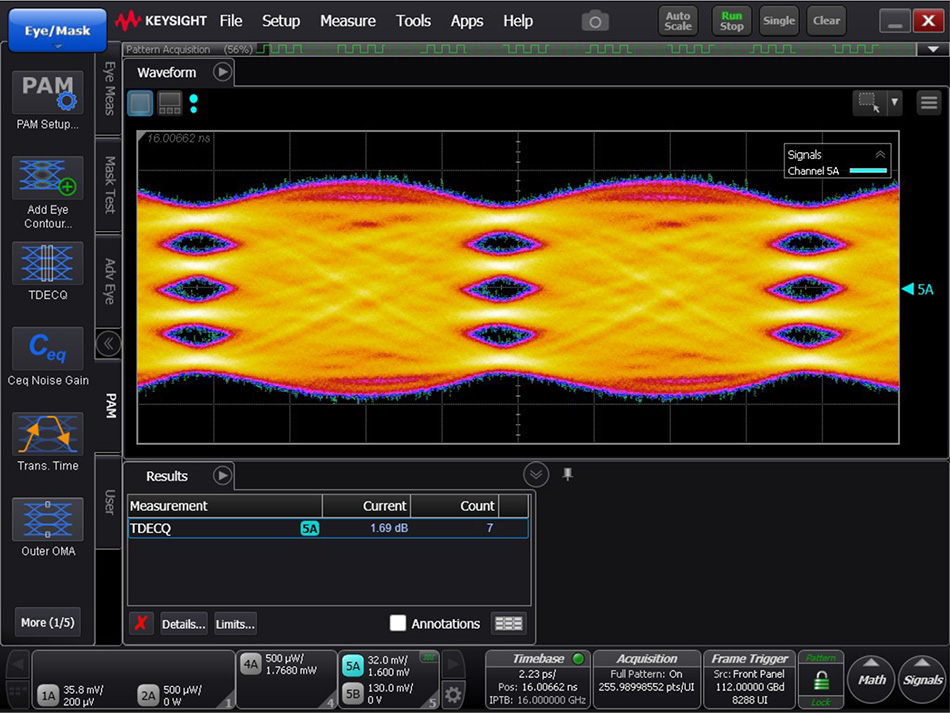
Coherent demonstrated 200G PAM4 monolithically-integrated distributed feedback laser-Mach Zehnder modulator technology at OFC 2023.
Our promise: Powering innovation in the AI era
There’s no doubt that we’re entering the era of AI. In fact, we’re already in it. At Coherent, our promise as an innovation leader is to empower our customers to define the future through our breakthrough technologies.
As the leader in datacom transceivers for over two decades, we expect to continue to innovate, to be a technology leader, and to deliver volume solutions to our customers to enable data centers that meet their needs. We’re excited to be part of the hardware solution that is helping to bring forth the power of AI and ML. And after 20 years, believe it or not, I’m just as excited as ever to be working in this fast-paced and impactful world of optical communications.
Learn more at www.coherent.com and follow us on LinkedIn.
“At Coherent, we already have a complete portfolio of transceivers matched to the requirements set by AI and ML. These transceivers are protocol-agnostic, meaning the same transceiver hardware can support Ethernet and InfiniBand, as well as proprietary protocols for AI and ML such as NVIDIA’s NVLink. Coherent is widely recognized as an expert in these transceivers and their core technologies."
